Via Gulf of St. Lawrence
Leaving Cape Breton, we began our overnight sail to Corner Brook, Newfoundland. It is located at the far end of the Bay of Islands, an extensive inlet located on the west coast of Newfoundland. It is a sub-basin of the Gulf of St. Lawrence, stretching about 50 km inland. With a population of 31,917, Corner Brook is the fifth largest settlement in Newfoundland and Labrador.
Like me, I’m sure you’ve always wondered what Corner Brook looks like. My first photograph addresses that question. This scene was photographed from the Captain James Cook National Historic Site, located on a promontory above the city. The scene was graced by the presence of our ship, moored at Corner Brook’s cruise terminal.
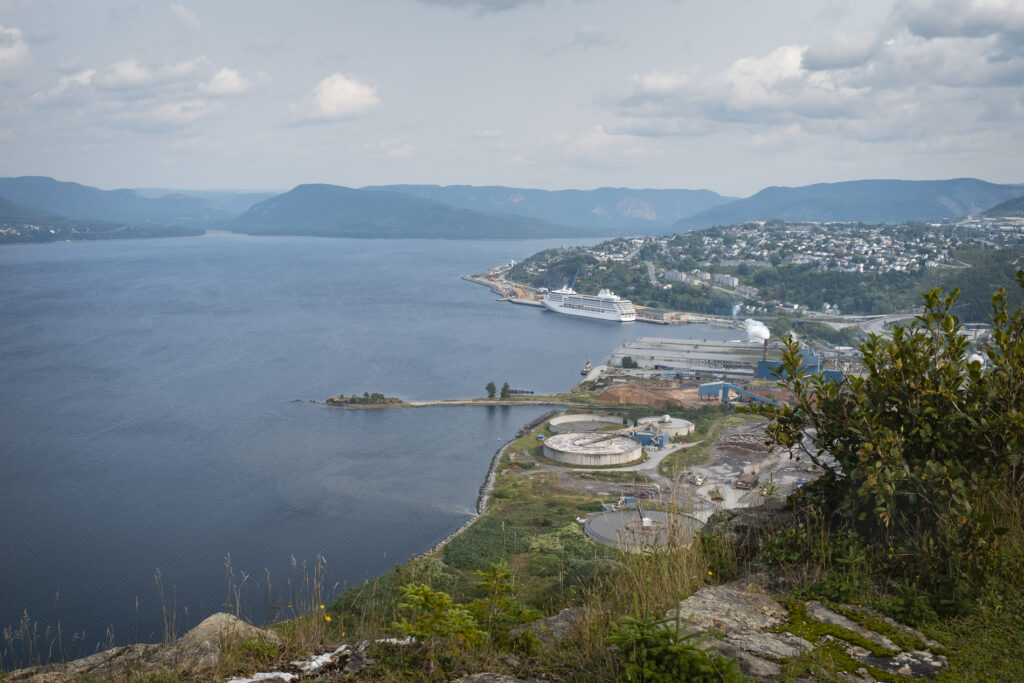
The next photograph features the highlight stop on our land excursion, Bottle Cove, located 50 km west of the city, on the coast of the Gulf of St. Lawrence. It is a scenic landscape, surprisingly one of very few. Much of our excursion was through very dense forest with the occasional glimpse of the Bay of Islands and stops at a few fishing villages. It was a good tour but not geared for landscape photography.
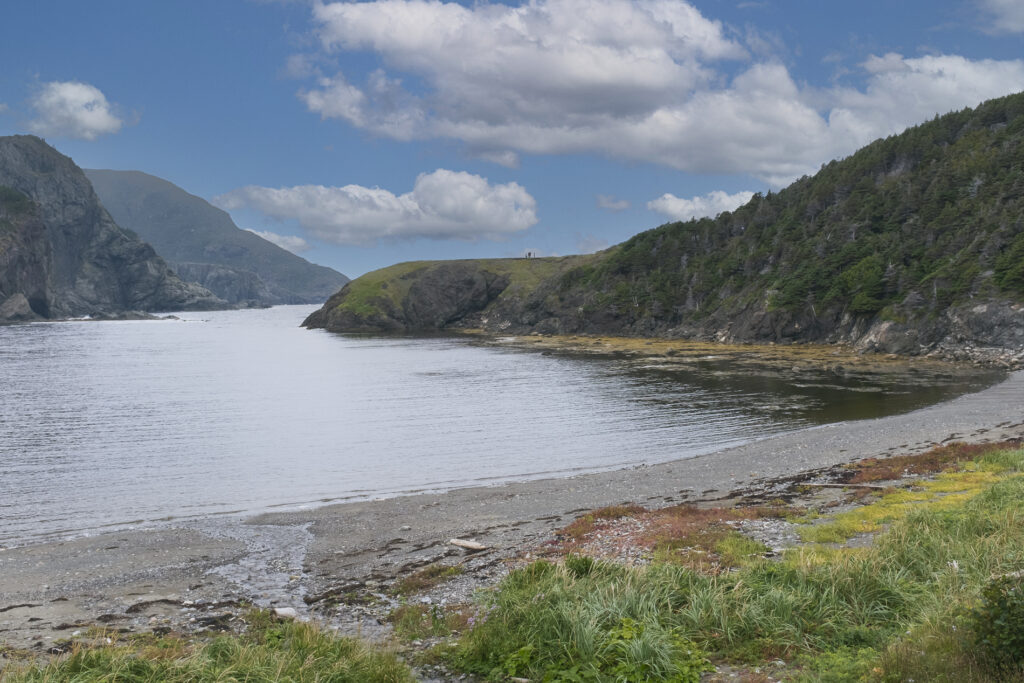
We departed Corner Book in the evening as always, and sailed that night and the next day across the Gulf of St. Lawrence and up the St. Lawrence River. My next photograph was taken early on the second morning of our “day at sea”. I was up early and able to capture this picture of the sun rising. At this point, we were in the St. Lawrence River and the land you see in the background is the South Shore.
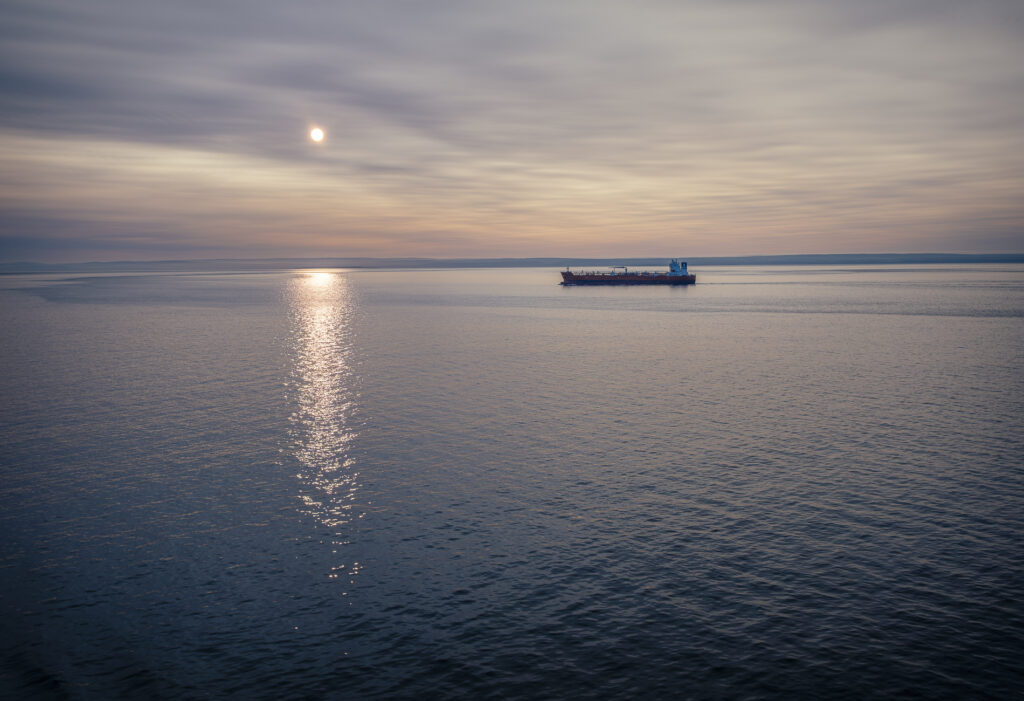
*Note: the similar picture shown in the masthead at the top of the post was taken a few minutes later when the passing ship aligned with the rising sun.
This picture was taken the following evening, just before the sun dipped below the western horizon.
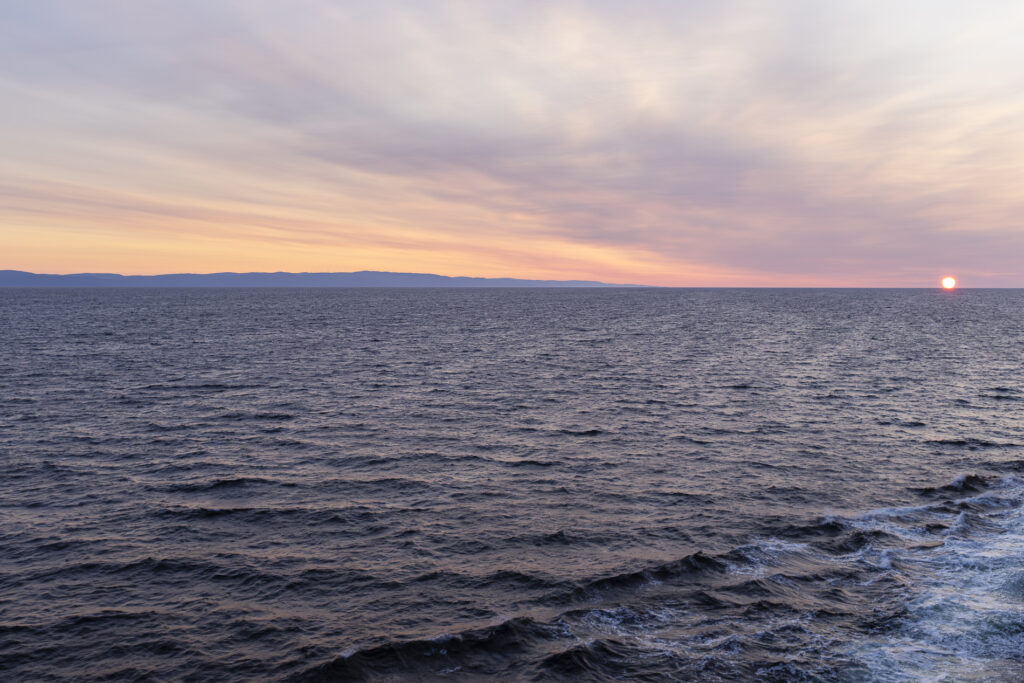
Our final stop before reaching our destination, Montreal was Quebec City. It’s one of Canada’s oldest cities, 415 years of age. Founded in 1608 by the French explorer Samuel de Champlain, Québec City is unlike any other city in North America with its dramatic cliff-top location overlooking the St. Lawrence River, its fortification walls, narrow winding streets and its wealth of historic buildings spanning four centuries.
We disembarked for our city tour at the bottom of the cliff, in la Basse Ville (Lower Québec City) which we toured before going up to the Upper City.
The is a great view, looking back down St. Antoine to the cruise terminal. The silvery lines on the old stone walls were put there as part of the city’s summer art festival, Plein Art.
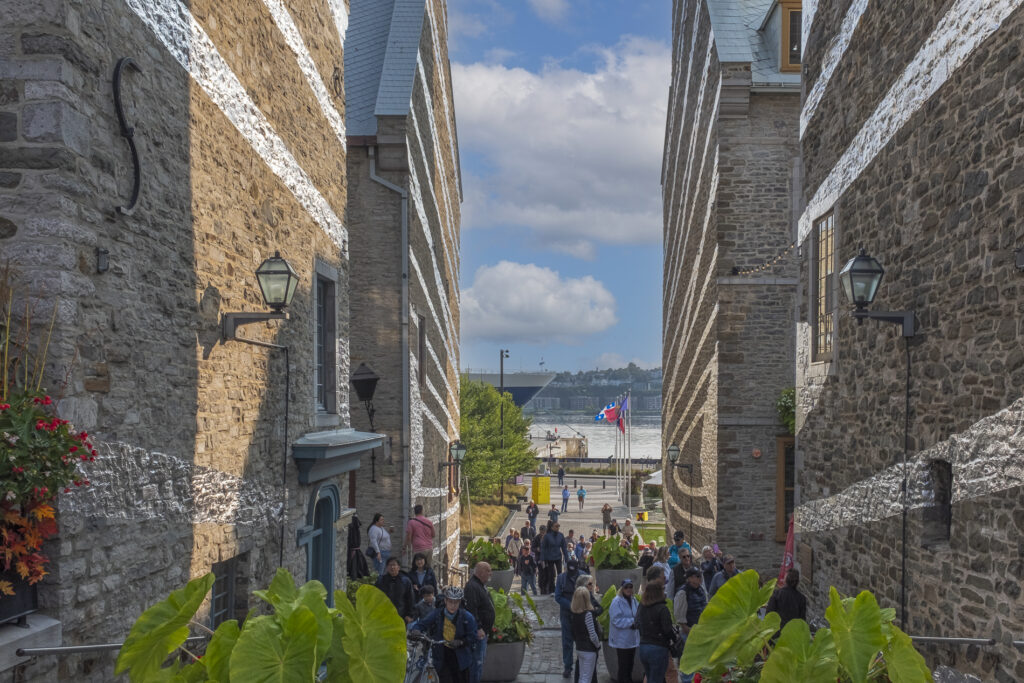
I took many photographs of the beautiful stone buildings in old Quebec, including this old shoe store. I find the combination of old stone and brilliantly coloured trim to be very appealing, photographically.
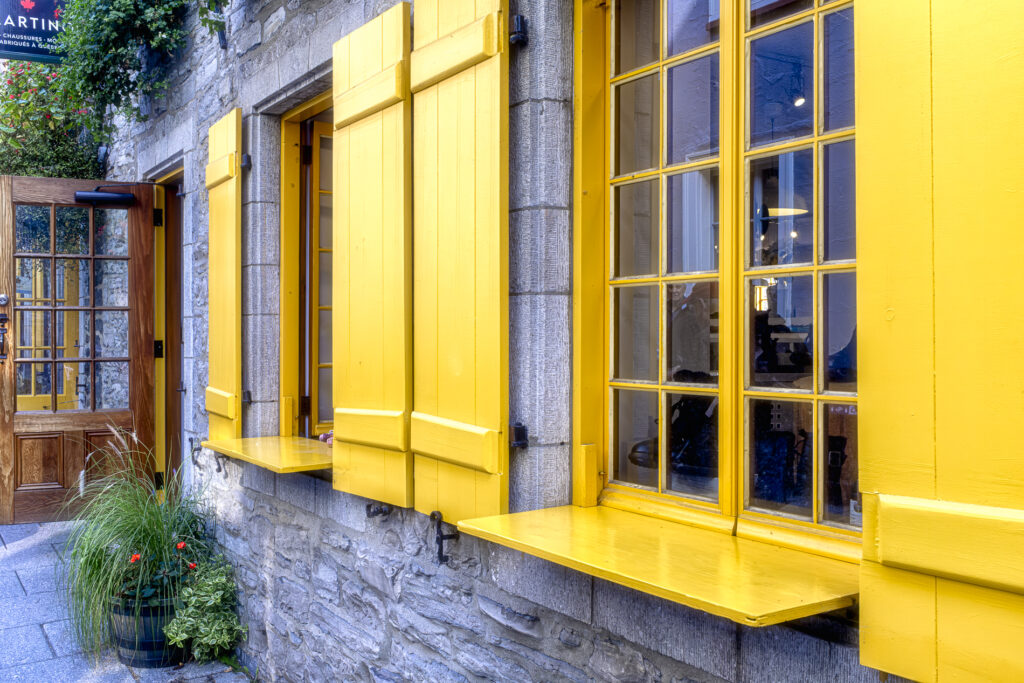
This is an interesting street, decorated by an overhead collection of colourful umbrellas. They run for a long stretch of this old, narrow, cobble-stoned street.
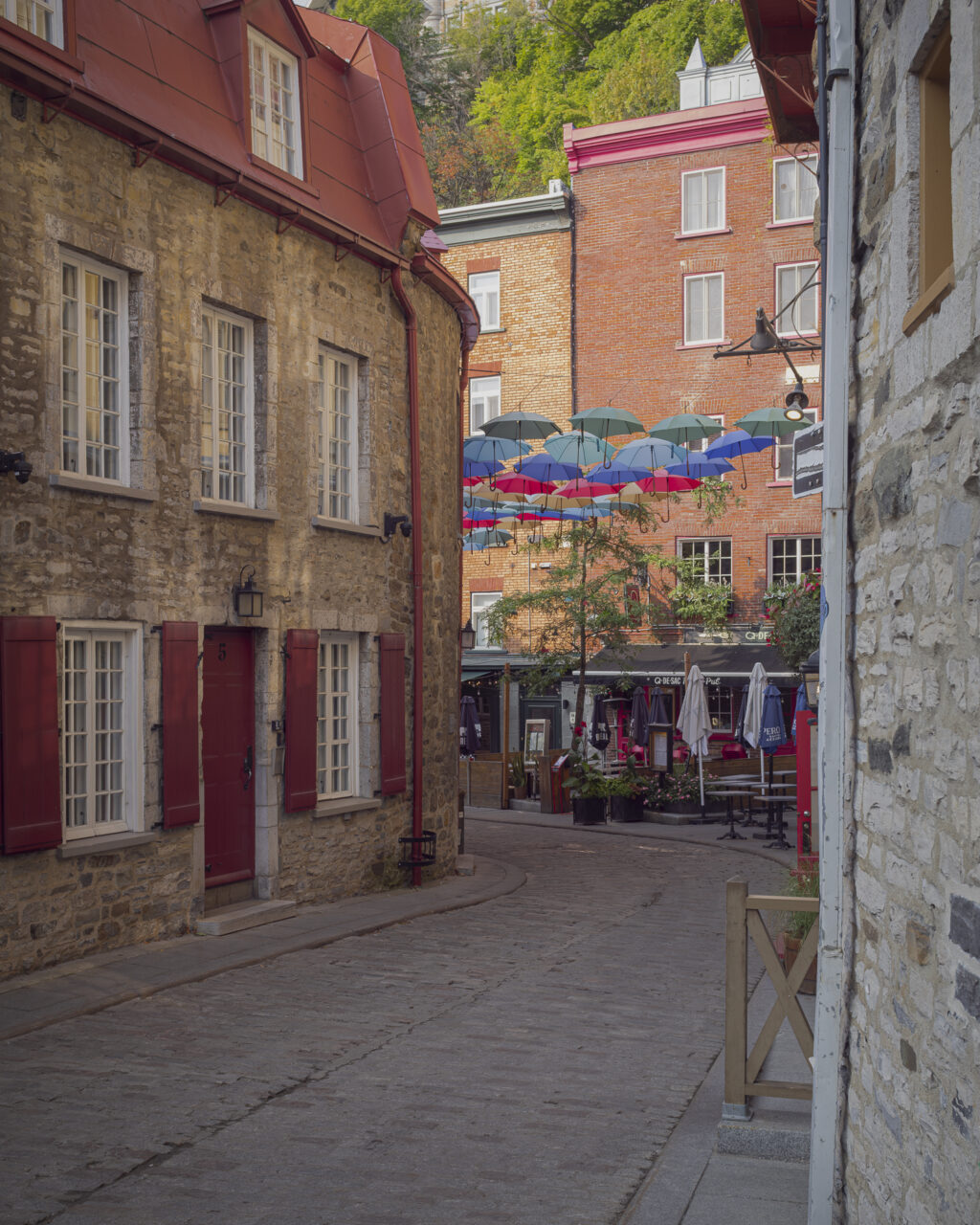
Later, after leaving Québec City, we passed beneath two bridges. The original Quebec Bridge is a road, rail, and pedestrian bridge across the lower Saint Lawrence River between Sainte-Foy and Lévis, in Quebec. The project failed twice during its construction, in 1907 and 1916, at the cost of 88 lives and additional people injured.
The newer, Pierre Laporte Bridge (shown below), is the longest main span suspension bridge in Canada. It crosses the St. Lawrence River, approximately 200 metres (660 ft) west (upstream) of the Quebec Bridge. It spans 1,041 metres (3,415 ft).
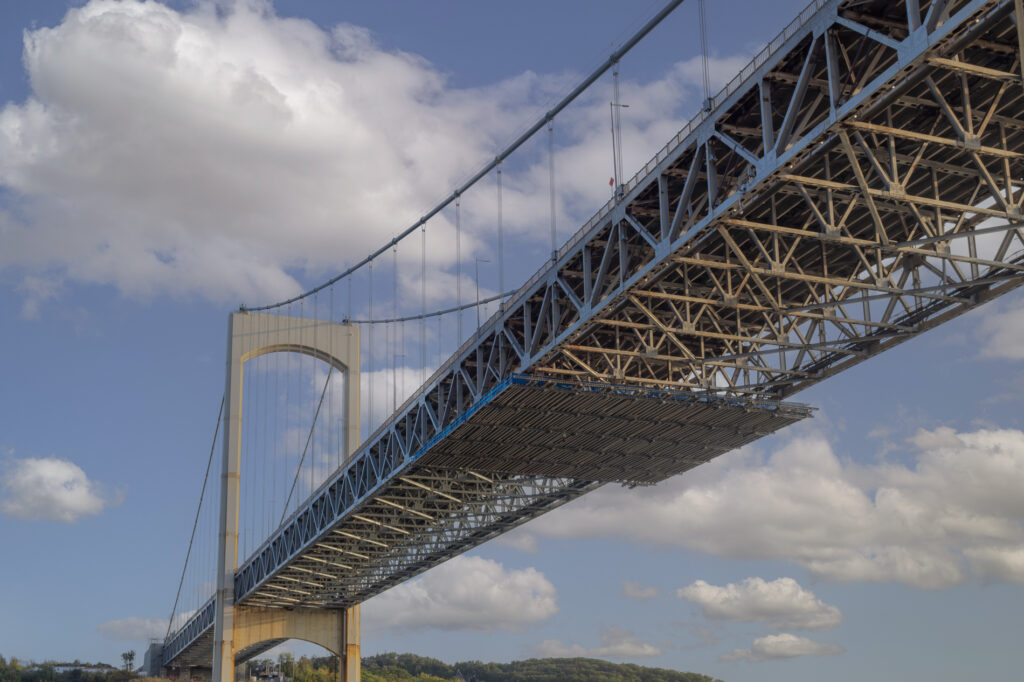
We disembarked from the Seven Seas Mariner the following morning upon our arrival in Montreal, the end of our cruise. Shortly after, we boarded a train for the next leg of our trip, to Toronto, to visit our daughter and family before returning home.
Our trip was a great experience, one we very much enjoyed.
